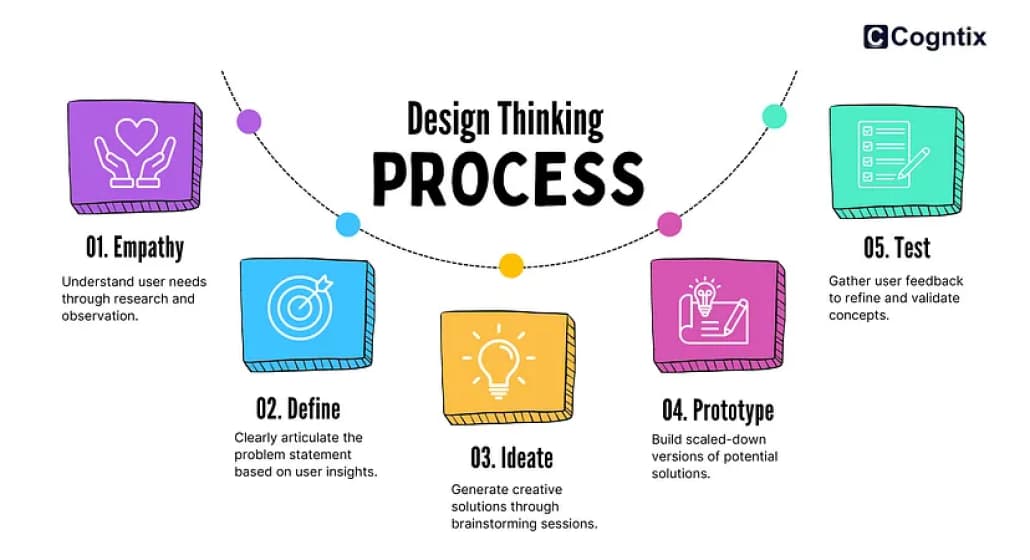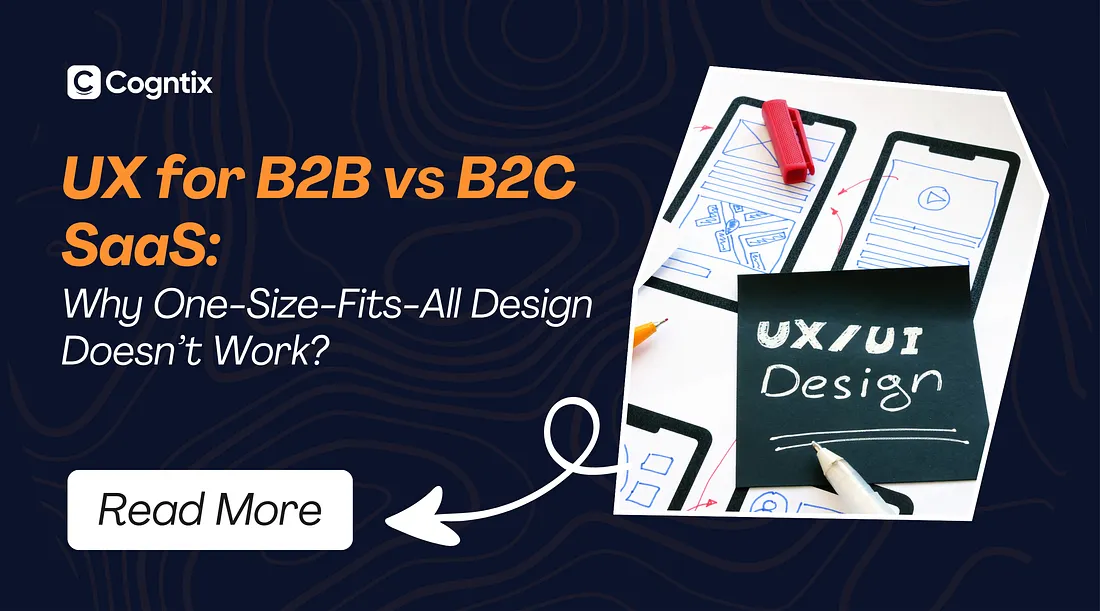Design thinking isn’t just a buzzword. It’s a powerful approach that empowers you to tackle complex challenges by putting the user at the center of the process and transform your projects from ordinary to extraordinary. Whether you’re developing a new product, launching a service, or solving a problem, design thinking provides a roadmap to innovation.
In this guide, you’ll discover the key stages of the design thinking process, from empathizing with users to prototyping and testing ideas. You’ll learn how to implement design thinking tools in your projects, brainstorm effectively, and create impactful problem statements.
By following this step-by-step approach, you’ll be equipped to harness the full potential of design thinking, enhance user experiences, and bring innovative ideas to life.
Understanding the Design Thinking Process
Design thinking is a problem-solving approach that puts users at the center of the process. Unlike traditional problem-solving methods that stick to rigid frameworks, design thinking is flexible and human-centered. It’s about understanding people, their problems, and creating solutions that truly resonate with them. Think of it as a bridge between understanding what users need and delivering solutions that are both practical and delightful.
The Five Stages of Design Thinking
Design thinking is structured into five key stages:
Empathize: Understand user needs through research and observation.
Define: Clearly articulate the problem statement based on user insights.
Ideate: Generate creative solutions through brainstorming sessions.
Prototype: Build scaled-down versions of potential solutions.
Test: Gather user feedback to refine and validate concepts.
Step 1: Empathize
The first step in design thinking is all about empathy. You can’t create something great without understanding who you’re creating it for.
How do you do this? Start by observing and interviewing your target audience. Ask open-ended questions and really listen to their responses. Imagine you’re a detective trying to solve a mystery. What are their pain points? What do they cherish? Collect stories, experiences, and emotions. This step is crucial because it lays the foundation for all your design decisions. Remember, you’re not just gathering data, you’re uncovering real human needs.
Step 2: Define
Now that you’ve gathered insights, it’s time to define the problem. What’s the core issue you want to tackle?
Write down a clear problem statement that reflects your findings. This statement should be concise and guide your team throughout the project. Picture it like a compass, it keeps you on the right path. A well-defined problem helps you avoid distractions and ensures everyone is focused on the same goal.
Step 3: Ideate
With your problem clearly defined, it’s time to think big. Ideation is all about brainstorming solutions without judgment. Gather your team and unleash your creativity.
Think of it like a giant brainstorming session where no idea is too wild. Use techniques like mind mapping, sketching, or even role-playing. Encourage everyone to share their thoughts. You’ll be surprised at how many great ideas come to light when the pressure to be perfect is gone. Remember, the goal is quantity over quality at this stage. Don’t worry about filtering ideas just yet, that’ll come later.
Step 4: Prototype
Now, it’s time to bring those ideas to life. Prototyping is about creating tangible representations of your concepts.
This doesn’t have to be perfect, it just needs to be functional enough to test your ideas. Think of it as building a model car before hitting the racetrack. The key is to make something that allows you to gather feedback. This isn’t about making a polished product, It’s about learning what works and what doesn’t.
Step 5: Test
Testing is where the magic happens. Present your prototypes to real users and gather their feedback. How do they interact with your designs? What do they love? What confuses them?
This step is about refining your solutions based on real-world insights. Don’t be afraid to ask tough questions. You want honest feedback that can help you improve. It’s often in these conversations that you’ll find the most valuable insights. Adjust your prototypes accordingly and iterate. This process might loop back to ideation or prototyping multiple times until you find the sweet spot.
The Value of Design Thinking in Problem Solving
Design thinking offers a defined process for innovation, making it more efficient than trial and error. It encourages teams to look at problems from different perspectives, fostering creative solutions that cater to human needs. By focusing on user experiences and behaviors, design thinking helps create impactful solutions that truly resonate with stakeholders.
Summary
Design thinking has proven to be a game-changer in problem-solving and innovation. By putting users at the heart of the process, it enables teams to create solutions that truly resonate with stakeholders. The step-by-step approach outlined in this guide equips you to tackle complex challenges, foster teamwork, and bring groundbreaking ideas to life in your projects.
Discover how design thinking can elevate your projects and drive innovation with Cogntix, contact our team today to learn more about the process and see how it can enhance your digital product development.




